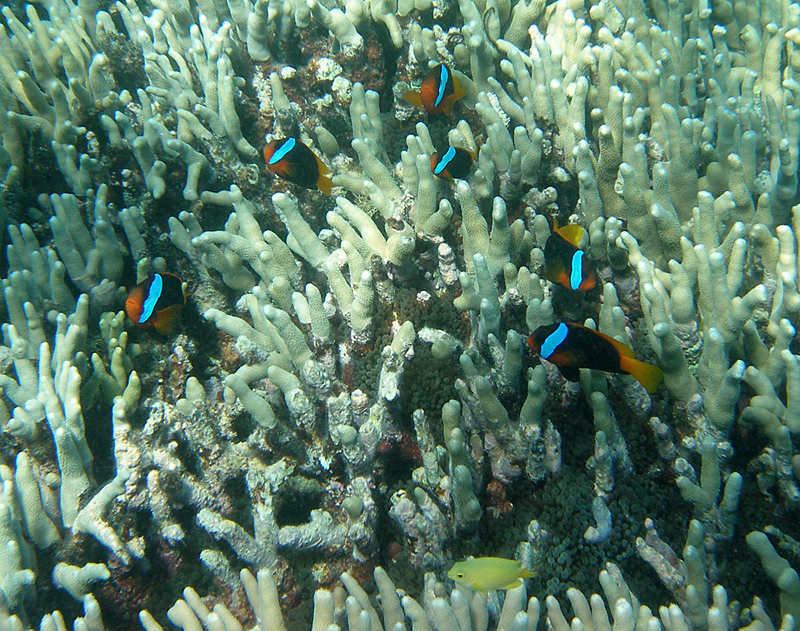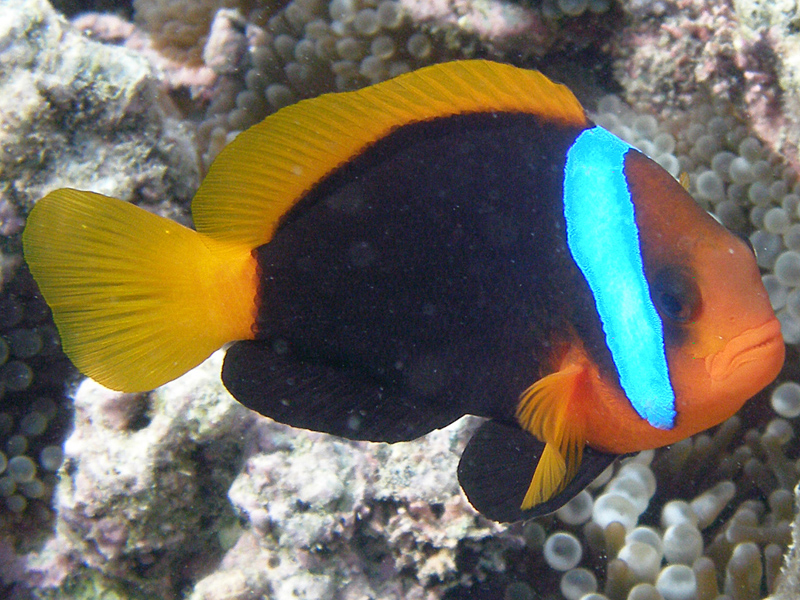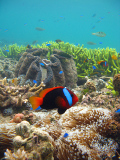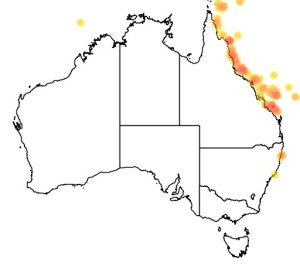
©Andy Lewis: A colony of Blackback Anemonefish over colonies of Entacmaea quadricolor embedded within the coral Porites cylindrica
Colours
Distinguishing features
A small black fish with an orange face, an electric blue line over the head behind the eye, and a yellow dorsal fin and tail. Lives in small groups on the colonial morph of the anemone Entacmaea quadricolour.
Size
- Up to 12 cm (Standard length)
Depth range
- Depth range data is not yet available.
Synonyms
Distribution
Distribution and habitat preferences
Generally seen in shallow reef flat and lagoonal habitats where the host anemone is embedded in a complex substrate of branching or submassive coral with plentiful shelter holes.
Found in most locations around the Island.
Behaviour
The Blackback Anemonefish lives in colonies of 3 to 15 fish around colonies of the host anemone. The fishes are not stung by the anemone, and in return they protect the anemone from predators and feed it from time to time. These fishes are protandrous hermaphrodites, starting life as males and switching to female at a larger size only when the dominant female in the colony dies. Like other damselfishes, the femal lays a batch of eggs close to the base of the anemone, and these are guarded by the male until they hatch about 7 days later. The developing larvae are imprinted with the smell of the anemone and they use this to find the appropriate settlement site at the end of the 10day larval stage. This species can be raised successfully in captivity, and consequently the larvae have been used in many studies of the swimming capabilities of larval reef fishes.
Web resources
References
References that assist with identification
- Fautin, D.G. and G.R. Allen (1992). Field guide to anemonefishes and their host sea anemones Western Australian Museum, Perth, WA.
Other references
- Arvedlund, M., I. Bundgaard and L.E. Nielsen (2000). Host imprinting in anemonefishes (Pisces: Pomacentridae): does it dictate spawning site preferences? Environmental Biology of Fishes, 58: 203-213. LIRS catalog number 600.
- Arvedlund, M., K. Larsen and H. Winsor (2000). The embryonic development of the olfactory system in Amphiprion melanopus (Perciformes: Pomacentridae) related to the host imprinting hypothesis, Journal of the Marine Biological Association of the United Kingdom, 80:3599: 1-7. LIRS catalog number 597.
- View all references



